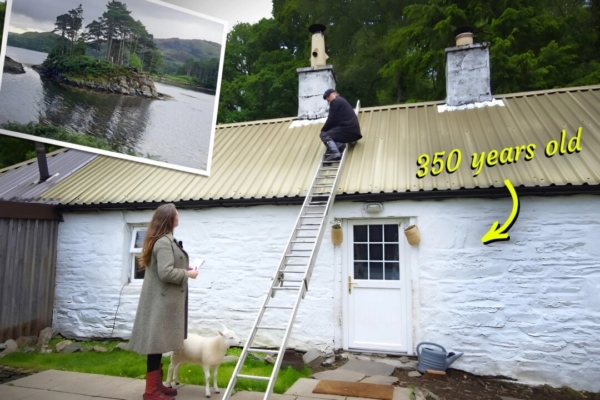Living in a stone cottage on a deserted island in Scotland may sound like a challenge, but for the Petersen couple, it has become a way of life filled with unique experiences and a deep connection to the past.
At first glance, the inconveniences of island living are apparent. Dinner ingredients are readily available but require fishing for your meal. The house is cozy, but only if you’ve collected enough firewood from the nearby forest. And forget about shopping – a boat ride to the mainland is necessary for supplies.
For city dwellers making the transition to island life, it takes time to discover the beauty within the simplicity. The Petersens never imagined living on this small island near the Isle of Skye, in an 18th-century house from a Scottish fairy tale. However, Katie Petersen’s family history of working for nobility, specifically the Duke of Argyll, provided them with an opportunity to apply for a position that led them to the island.
“We decided to pursue what we love, which is working on estates,” said 41-year-old Mrs. Petersen, originally from Edinburgh. “Many people are unaware that such jobs exist.” The estate was hiring at the time, and the stone cottage on the deserted island needed caretakers. The Petersens wasted no time in submitting their application.
Referred to as Scotland’s last tropical rainforest, the Hebrides Isles offered the couple a paradise-like setting. The crystal-clear blue waters, warm breezes from the Gulf Stream, and the unique charm of the stone cottage stood in stark contrast to typical Scottish mountain cabins.
The island lacked roads, but the Petersens managed to locate the stone cottage with their two sheep and a cat in tow. Built around 1745, the cottage bore signs of its former inhabitants, each leaving a mark on the dwelling.
Unsatisfied with the modern renovations that had caused issues with dampness due to retained moisture, the Petersens undertook extensive refurbishments. Stripping away modern amenities, they exposed the original stone walls, reconnecting with the ancient soul of the house.
As they delved deeper into the restoration process, the couple discovered artifacts of past residents, such as old tools found in the ditch behind the house. Mr. Petersen reflected on the history preserved within the walls, a testament to the individuals who once called the cottage home.
Their daily routine on the island revolves around caring for the animals, tending to gardening tasks, and sourcing dinner through fishing expeditions. With limited internet access, the Petersens also found solace in building an online community through social media.
While island living presents its inconveniences, such as erratic electricity and the need for meticulous planning regarding provisions, the couple found solace in the natural rhythms and peaceful solitude of their new surroundings. The absence of urban distractions allowed them to embrace the slower pace and forge a deeper connection with nature.
In conclusion, the Petersens have found immense fulfillment in their secluded island lifestyle. Mr. Petersen noted that the absence of daily interactions with others was not necessarily a drawback. In their retreat from modern society, they discovered a profound appreciation for the simplicity of life and a newfound harmony with the natural world.

